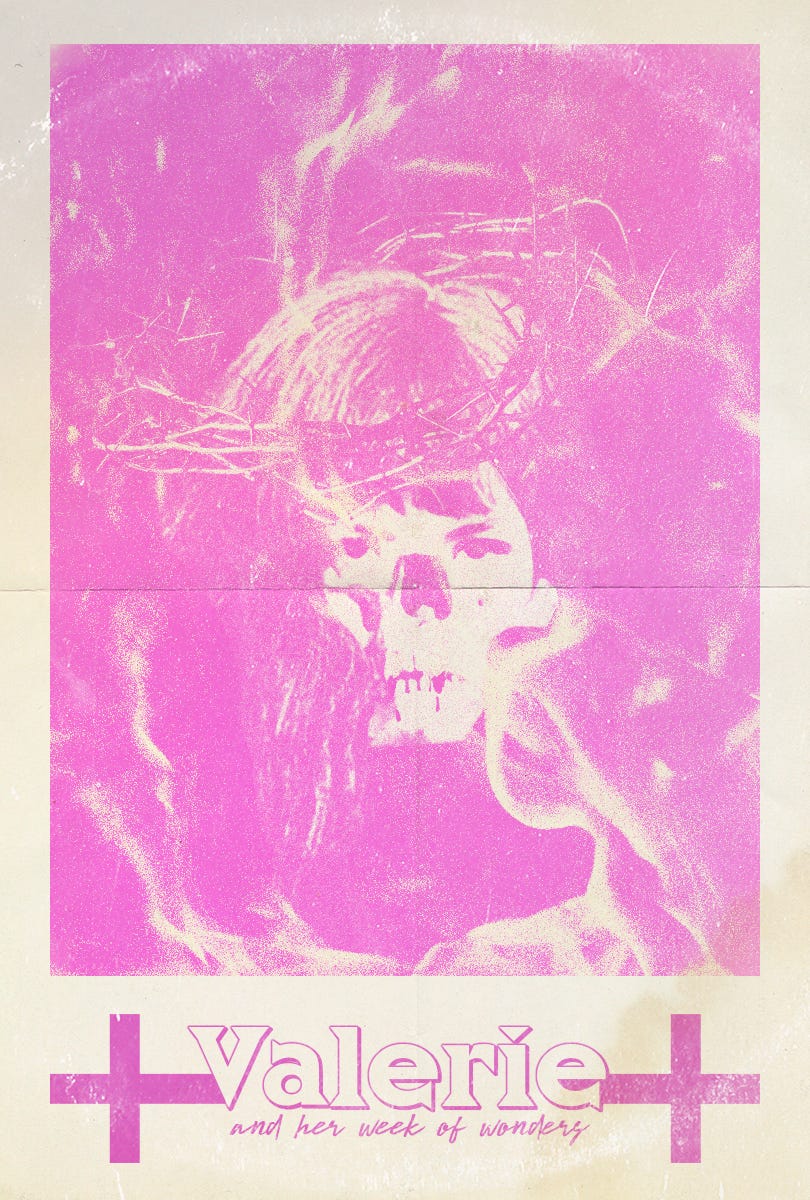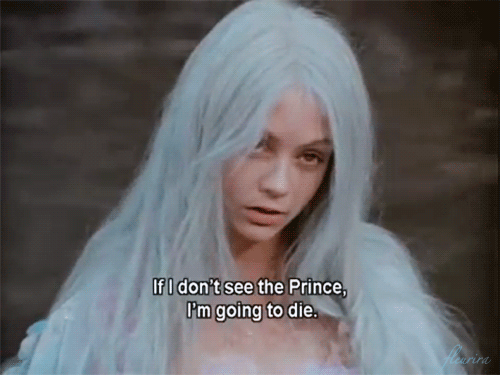Though The Femme Moon is purely Astro*Lite, archetypes will always remain a focal field of frolic. Folklore, of course, fits our fancy of study, the pages of fairytales ushering since childhood. The fairytale format has been an artistic cornerstone from day one: tiptoeing beyond a fantastical feminine aesthetic into playtime, speaking of real and imagined perils through the metaphors of our own storytelling, incorporated into edgy teenage notebook poems, cherished in the pages of Women Who Run With Wolves and Francesca Lia Block’s Shangri-LA. Fairytale warnings, femme gossip which so often saves lives, were recently reminisced in our AnarchAngel anthology, now available on Etsy.
Beyond the darkness were moments of pleasure, creatures of joy, even with innocent gullibility leading to dangerous missteps, predators always lurking in the shadows.

For the 2023 Pisces theme, Murda Hill’s Femme Film Astro Archetype hearkened to the surreal candy-colored fairytale films of the Seventies, featuring princess-esque protagonists brimming with curiosity and, in a way, cursed by their beauty. Two from 1970 and re-released by Criterion Collection, Donkey Skin (French: Peau d'âne) and Valerie and Her Week of Wonders (Czech: Valerie a týden divů) bolster taboo themes, hunted by lustful elders, pressured by possession and objectification, motivating the central characters to flee. Along their psychological and psychedelic journeys of evading harm is an exploration of inner desires, all the while creating one’s own sense of safety in a world that is anything but.
Trigger warnings ahead: sexual assault, incest, violence, suicide
Nefarious plots permeate both films regardless of their floral frothy formats, explicitly so in the problematic Week of Wonders. Catalyzed by the arrival of Valerie’s first menses, gothic vampires and grim-realistic pedophile priests obviously parallel monsters as men, more so than Donkey Skin and the grieving King who wishes to marry his daughter. Accusations of sexual enticement, the age-old deflection abusers have used to demonize the femmes they prey on, leads to Valerie’s witch hunt. Despite its unnecessary depictions of a minor, the shock in which the changing Valerie must navigate life as a “woman” unfurls as a fantastical horror mirroring realistic threat more than any fairytale cinema before its time. Though first watching this beautifully gauzy feature in teenhood was deeply and painfully relatable, Valerie contains a laundry list of uncomfortable and violent scenes.
While we don’t fully recommend each featured FFAA, more so a study of pop cult archetypal alignment, the main characters’ fluid intuition, commune with Nature and kind perspectives reverberate Pisces’ essence.
The heroines of Donkey Skin and Week of Wonders draw from an internal psychic well to keep safe from patriarchal predators, wrapping themselves in gardens and forests for protection and comfort, creating altars and rituals in every meditative moment. Deeply seeing into the souls of everyone they encounter, despite their youth stirred in harsh truths, and realizing their own pursuits of love emboldened by mutual respect is Pisces energy through and through. The oracle that is Donkey Skin’s elegant Lilac Fairy adds additional clairvoyance. Each movie spins into hazy hippie-dippie finales, despite their twisted topics.
Valerie unsurprisingly inspired feminist magical-realism author Angela Carter to pen The Company of Wolves, adapted into a similarly starry-eyed yet unsettling motion picture, nodding to the Little Red Riding Hood narrative. These motion pictures further opened doors to incorporate adult themes, especially that of sexual awakening, into folklore-focused fantasy.
Unlike the pureness of heart which magically leads the innocents of the aforementioned to a favorable outcome, some fairy tales do NOT have happy endings.
As an obvious akin of the Fish Zodiac, mermaids are the most Pisces appropriate from the mythical being legends. Danish author Hans Christen Anderson was inspired by the earlier Undine when he penned The Little Mermaid, both published in the 1800’s and harboring tragic endings. Water-spirit folklore had existed for centuries, fishing communities speaking of siren’s intent to lure men to watery graves, beautiful but dangerous. These books were a practice in a Romeo & Juliet arc between such worlds.
Long before the Disney animation of red-headed Ariel with the Caribbean singing crab, not one but TWO live action versions of The Little Mermaid were released in 1976. The Czech version featured little underwater photography, no fake tails, opting for a gauzy cavernous set and flowing gowns. Both bolstered pastel wigs, mostly in cool tones as icy ocean dwellers. While the Russian version had more carefree folly, her story additionally ended with sacrifice and death.
Strict father figures who warned against the cruelty of humans stands with parental commonalities of protection; the child’s rejection of constraints, further drawing them to the forbidden in search of freedom, additionally is a tale as old as time. The choice for the tragic ending is undoubtedly a strategic morale and punishment, though the illusions of “true love” bringing heartbreak for young women isn’t unheard of. The Little Mermaid and her sorrow is romanticized, the relatable and relentless cautionary crux of teen tragedy in fairytale format.
Alternatively, in Jungian speak, The Little Mermaid’s yearning to rise from the sea and walk among men could represent the journey of the unconscious mind, evolving into consciousness. All three of the films chosen for Murda Hill’s Pisces FFAA - The Little Mermaid, Donkey Skin, and Valerie and Her Week of Wonders - paint wisps of emotive moments, drenched in psychedelic color and texture, creating a beautiful dreamscape of desire and fulfillment. They are truly unique picks of vintage cinema able to create a surreal atmosphere while still capturing the longing and joy of their female protagonists, all with a contemporary twist. Watercolors for a blueprint, each a quixotic wonderland of pain, pleasure and the pursuit of one’s own desire to a Life of Love, Pisces in youth and growth sees beauty in everything.








